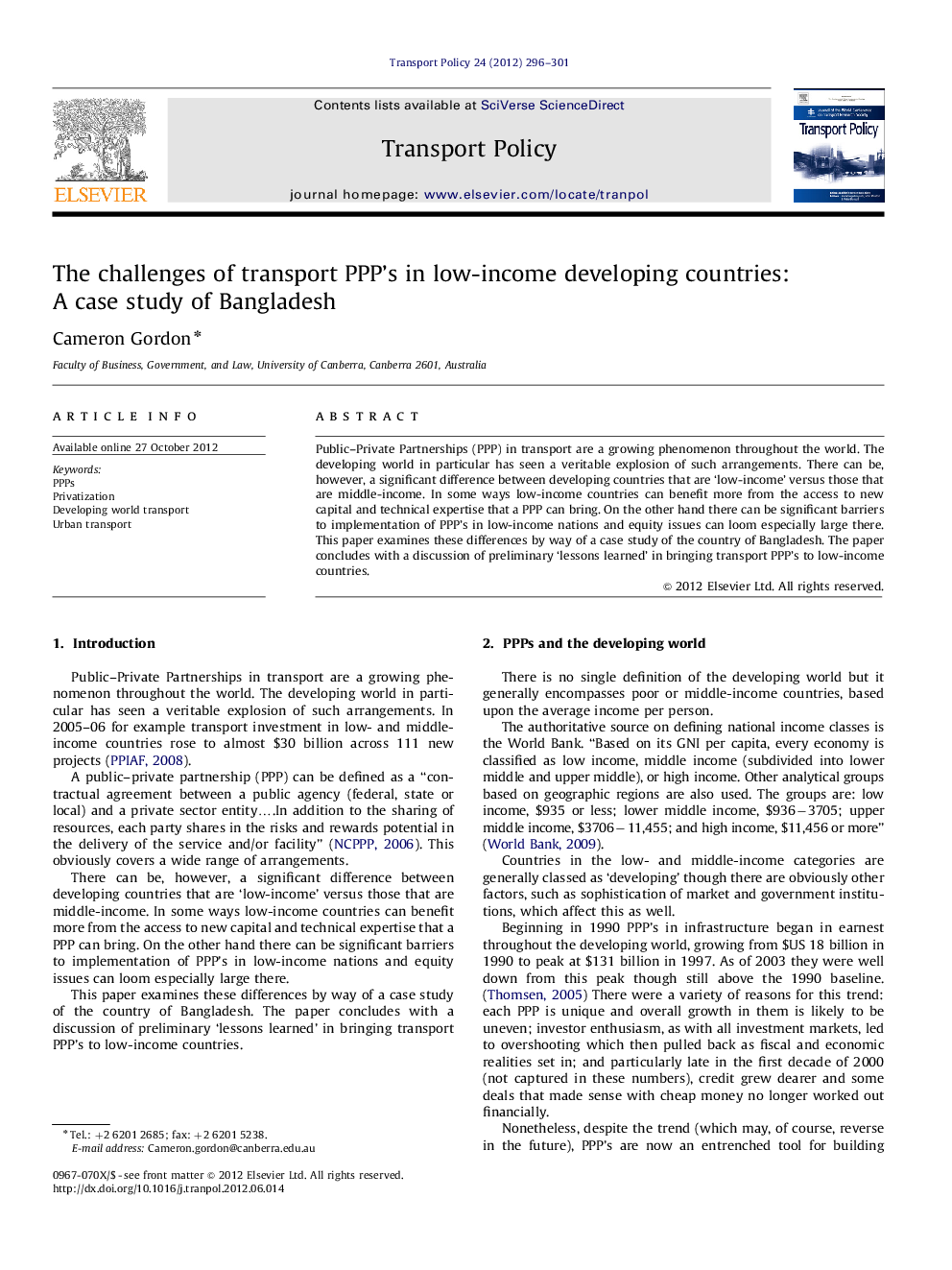| Article ID | Journal | Published Year | Pages | File Type |
|---|---|---|---|---|
| 1065105 | Transport Policy | 2012 | 6 Pages |
Public–Private Partnerships (PPP) in transport are a growing phenomenon throughout the world. The developing world in particular has seen a veritable explosion of such arrangements. There can be, however, a significant difference between developing countries that are ‘low-income’ versus those that are middle-income. In some ways low-income countries can benefit more from the access to new capital and technical expertise that a PPP can bring. On the other hand there can be significant barriers to implementation of PPP's in low-income nations and equity issues can loom especially large there. This paper examines these differences by way of a case study of the country of Bangladesh. The paper concludes with a discussion of preliminary ‘lessons learned’ in bringing transport PPP's to low-income countries.
► The article considers barriers to transport PPPs in low-income countries. ► There is an absence of transport PPPs in Bangladesh, the case study. ► Low income of users and low ability to pay facility charges is one reason for this. ► A lack of a strong political will and stable macro-economic environment is another. ► These barriers however can be surmounted with good public policy.
